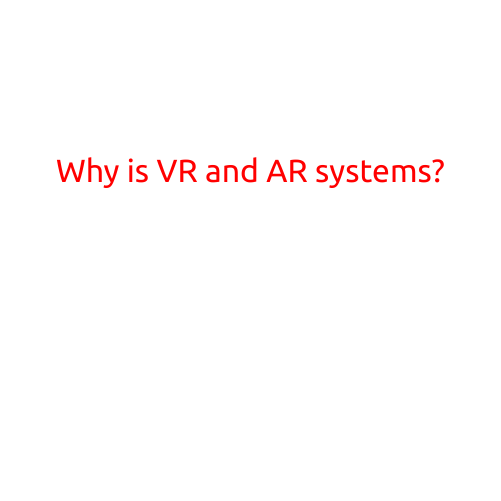
Why is VR and AR Systems a Game-Changer for the Future?
The terms “Virtual Reality” (VR) and “Augmented Reality” (AR) have become increasingly popular in recent years, with many of us wondering what all the fuss is about. As technology continues to evolve, the lines between reality and fantasy are becoming increasingly blurred, and VR and AR systems are at the forefront of this revolution.
But what exactly are VR and AR, and why are they such a big deal? In this article, we’ll delve into the world of immersive technology and explore the many reasons why VR and AR systems are set to change the game for industries, individuals, and society as a whole.
What is Virtual Reality (VR)?
Virtual Reality is a computer-generated simulation of a three-dimensional environment that can be experienced and interacted with in a seemingly real or physical way. Using a headset, controllers, and sometimes even haptic feedback suits, VR technology allows users to transport themselves to new and imaginative worlds, immersing themselves in games, stories, and experiences that are anything but ordinary.
What is Augmented Reality (AR)?
Augmented Reality is a technology that overlays virtual information onto the real world, blurring the lines between physical and digital reality. Using a device’s camera and sensors, AR technology adds digital layers to the real world, enhancing and interacting with the environment in real-time. This can include anything from virtual filters and graphics to interactive 3D models and experiences.
Why is VR and AR a Game-Changer?
The benefits of VR and AR systems go far beyond mere entertainment. Here are just a few reasons why these technologies are poised to revolutionize industries and change the world:
Improved Training and Education: VR and AR systems can revolutionize the way we learn and train, providing immersive, interactive experiences that simulate real-world scenarios. This is particularly useful in fields like medicine, aviation, and the military.
Enhanced Gaming and Entertainment: VR and AR systems offer a level of immersion and interaction that was previously unimaginable. From gaming to movies and music, these technologies will change the way we consume entertainment.
Increased Productivity and Efficiency: VR and AR systems can streamline workflows, simplify complex tasks, and reduce errors. This is particularly useful in industries like manufacturing, healthcare, and architecture.
Accessible and Inclusive: VR and AR systems can provide access to experiences and environments that would otherwise be impossible or impractical. This is particularly beneficial for people with disabilities, remote workers, and those with limited mobility.
Transforming Health and Wellness: VR and AR systems can revolutionize the way we approach mental health, therapy, and rehabilitation. From exposure therapy to physical therapy, these technologies offer a new level of immersion and interaction.
Economic Growth and Development: The VR and AR industries are expected to generate significant revenue and create new job opportunities. This can contribute to economic growth and development in cities and regions around the world.
The Future of VR and AR
As VR and AR technologies continue to evolve, we can expect to see even more innovative applications across industries and sectors. From improved healthcare and education to enhanced entertainment and productivity, the potential for VR and AR systems is vast and exciting.
As we look to the future, one thing is clear: VR and AR systems are here to stay, and their impact will be felt far beyond the realm of gaming and entertainment. Whether you’re a business, individual, or simply a curious observer, the world of immersive technology is something to be reckoned with – and we can’t wait to see what the future holds.





